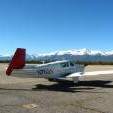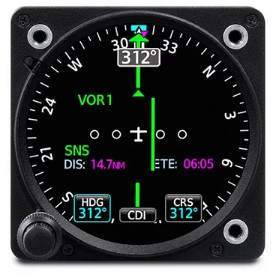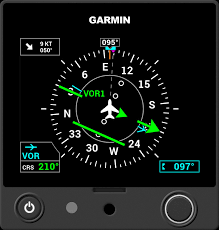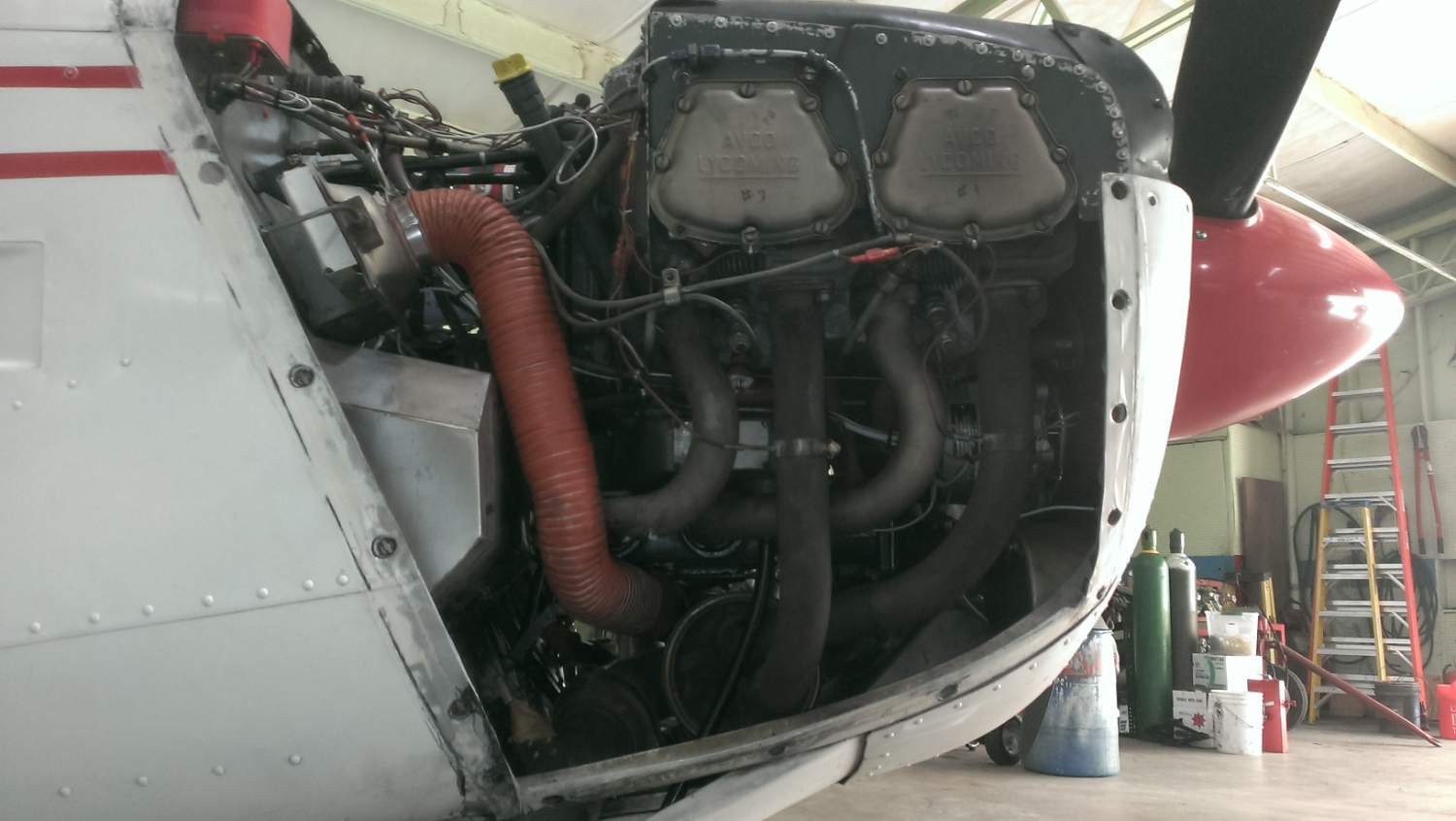-
Posts
1,477 -
Joined
-
Last visited
-
Days Won
5
Content Type
Profiles
Forums
Blogs
Gallery
Downloads
Media Demo
Events
Everything posted by Vance Harral
-
While I understand the emotional sentiment, the math ain't mathin'. From your own data, if there are 143,000 piston aircraft in the country, a loss of 50 would represent 0.035 percent of the fleet, which is indeed a rounding error. Per GAMA, the industry built 1,909 new piston airplanes in 2023. The idea that a theoretical 50 unit loss from a natural disaster somehow represents a "catastrophic loss" for the fleet that "won't be replaced", just ain't so. Natural disasters have essentially nothing to do with the decline of piston GA. More importantly, airplane owners in the paths of hurricanes have all kinds of concerns, of which their airplane is only one, and not necessarily the most important. Whether to expend time, money, and energy to move it is their business and no one else's. That said, it's certainly true that lost Mooneys aren't replaced with new Mooneys. And none of this data changes my sympathy for those in the path.
-

NOTAMS Going ICAO in December….
Vance Harral replied to hammdo's topic in Miscellaneous Aviation Talk
+1 I teach my students that the NOTAM system is not designed to give valuable information to pilots, it's designed to shield people on the ground from liability. No matter how small the risk, no matter how far-fetched the scenario that would actually lead to maiming and death, everyone on the ground just wants to be able to say, "Well, I posted a NOTAM." Tower operators don't fix lights any more, because they know it's cheaper and easier to just keep re-filing that NOTAM (some of the ones in my area have been up for years). Same with VORs, cranes, etc. When I can't sleep at night, I sometimes wonder if it would be feasible to band together as pilots and simply boycott the NOTAM system. To announce to the government and the public at large (including the media), "We refuse to use this broken system. The people responsible for managing it are putting you at risk." Back to the subject at hand, I think @Hank is missing something important about that, "unnecessary government gibberish" in the Q line. The info sheet from Sporty's says that line is intended in part to support, "the automated filtering of NOTAMs". I hold out a bit of hope that in the future, one might be able to configure Foreflight or Garmin Pilot or 1-800-WX-BRIEF or whatever to simply not tell me about UAS below 400', unlit towers, instrument procedures for VFR flights, and so forth. I'll sign any waiver they want me to sign to do so. -

If you need/want the OEM 40:1 Gear Set
Vance Harral replied to Matthew P's topic in Vintage Mooneys (pre-J models)
This seems like the sort of thing Mooneyspacers could collectively fund in a way that doesn't take much cash out of any particular person's pocket. I'd pledge $100 or more toward the effort, and I'd bet there are dozens of others that would too. -

If you need/want the OEM 40:1 Gear Set
Vance Harral replied to Matthew P's topic in Vintage Mooneys (pre-J models)
Thanks for your tireless efforts, Matt. -

Thoughts on adding 2 - G5s and Flight Stream
Vance Harral replied to finnicky7's topic in Vintage Mooneys (pre-J models)
I have very little - but not zero - time behind a GI275 set up as an HSI. It's a beautiful display, has moving map features, etc. I didn't have any trouble with the menu logic, though I'm a nerd and worry slightly that less nerdy pilots may get the thing scrolled onto a data-dense page they have trouble recovering from in IMC. To me, the primary drawback vs. the G5 is the round vs. square format. I appreciate that the round format is one of the primary selling points of the 275, but the square-format G5 has corners into which additional information can be packed without giving up screen real estate traditionally dedicated to the HSI itself. As the pics below show, the round format requires things like distance/ETE/HDG/CRS to sit on top of compass numbers, the course pointer, etc. Garmin did a perfectly reasonable job of this, but there's just no getting around the fact that some of the displayed data covers up stuff that doesn't have to be covered in a square format. That said, everything's a trade-off. If you'd never seen a square-format HSI you wouldn't care about the "packing" of information. And the higher display resolution of the 275 is going to be favored vs. the lower-res but physically larger G5, by lots of pilots with good near-distance vision. I'm pretty sure no one has installed a 275, hated it, and gone back to a G5. They're both great instruments. I'd be curious to know if Garmin relocated the control knob from lower right to lower left because there are so many airplanes with the yoke shaft close to the lower right corner of the DG/HSI. -

Thoughts on adding 2 - G5s and Flight Stream
Vance Harral replied to finnicky7's topic in Vintage Mooneys (pre-J models)
I like the dual G5s and think they're an economical solution. Older tech than GI-275s, but superior in some ways (I like the square display and larger physical screen size, albeit with fewer pixels). Be aware that if you don't cut a whole new panel, the rotating knob on the G5 HSI will wind up very close to your yoke shaft, which is an annoyance I didn't understand until after ours were installed. It'll be slightly closer to the yoke shaft than the adjustment knob on your current DG, and you'll use it in flight a lot more often to set a heading bug. I don't think we would have done anything differently if I'd known about this in advance, but I think about it almost every time I work with it. You either use your left hand - a little awkward if you're right handed - or you have to scrunch your right hand down along the yoke shaft to turn the knob. @Ragsf15e has solved this problem with a panel that mounts the G5s to the right of the yoke shaft. Another solution is to go with GI-275s which have their control knob on the left side rather than the right; but that's significantly more money and a physically smaller screen in exchange for some nicer features and capabilities. -
This sort of thing is always a little surprising, but it's not that uncommon. An engine with multiple cylinders will often continue to produce power even after throwing a rod. A few years ago, I worked for a company that had a data center with an emergency backup diesel generator. They hadn't tested it in ages, which is obviously not great management. Anyway, one day the power went out, the generator cranked up, and after a few minutes it broke a rod in such a manner that the flailing rod sawed the crankcase completely in half. But because of the way the engine was mounted, the crankshaft was still fairly well supported. It ran like that for a couple of hours before anyone went over to investigate the noise they had previously assumed was just normal.
-

Location of gear up switch
Vance Harral replied to Matthew P's topic in Vintage Mooneys (pre-J models)
You are correct, and Yetti's statement is simply wrong for M20E models of S/N 21-1181 and on. The positive lead of the gear warning sonalert is connected to an output pin of one pole in the DPTP uplimit switch, and the input pin of that pole is connected to the gear unsafe light, hence why the light can extinguish with the disabling of the gear horn CB. But the wiring of the gear horn is a little complicated - its positive lead is connected to several things, including the throttle position sense switch, and I agree with other speculators that a mis-placement of that switch is the likely cause of your problem. I understand people are just trying to help, but I really wish folks here would stop making blanket statements about electrical wiring without identifying specific models and serial numbers, and ideally referencing schematics. Mooney changed the electrical wiring of the C/E/F models several times over the production run, in some cases changing the logic of the test and warning circuitry. What is true in one "Vintage Mooney" isn't necessarily true in another. You have to look at the schematics to give advice. -
Circuit breakers definitely wear out, especially if they are manually pulled from time to time. Agree that it's not particularly likely to be the problem, but it's definitely in the the set of things to check and/or consider replacing.
-
On that we agree. We know they wear, but not at a rate of concern provided they're inspected and maintained. I do think the speculation on how many years they might last is pointless, as it's not calendar time that causes them to wear. Are you certain of that? Some closed, lubricated systems effectively form a constant thin film between the meshing surfaces, such that the surfaces never actually touch. I'm mostly ignorant in such matters, and not claiming the 40:1 gears last "forever". But I could believe it's possible to design a set of gears with a high enough ratio that the force between gear teeth is never sufficient to entirely displace the lubricant.
-
Every time you post this hypothesis that only poorly-maintained 20:1 gears wear out, I'm going to counter with my anecdotal story that our 20:1 gears wore to the point of failing the SB M20-190B inspection, despite regular maintenance and proper regreasing per the associated SB/AD, over many years of ownership. We knew this was coming, as the backlash in the gear set got progressively worse over a period of multiple inspections. Wear is obviously a function of gear cycles, and we put more on our airplane than most. So I'm not surprised there are airframes with the original 20:1 gears, and lots more hours than ours. I'm sure it's also true that poorly maintained gears wear faster. But the 20:1 gears absolutely do wear out, even when maintained properly.
-
In the roughly 20 years we've owned our airplane, we've had a handful of audio issues. Every single one of them turned out to be a loose ground somewhere. Loose audio grounds interfere with the audio performance itself. Loose grounds elsewhere in the system create electrical noise, which can translate to noisy audio. In as-purchased condition, a number of the ground connections for various electrical components in our airplane were made for convenience rather than robust design. Several were made via nearby screws that just happened to fasten into metal components. Over time, I've managed to re-wire most of those to the ground terminal block near the circuit breakers that is really supposed to be used for this, and it makes it much easier to check for bad grounds. But there are still several different locations where "things" are wired to ground. Nowadays, when we get electrical noise, the first thing I do is sigh. Then I take an ibuprofen. Then I lie down under the instrument panel and start tracing and wiggling all the grounds, one by one. Suggest you start there. It's tedious, but straightforward, and free.
-
This is more or less what I do when teaching unusual attitude recovery to students. Rather than taking the controls when they go heads down/eyes closed/foggles/whatever, I just ask them to keep flying the airplane however they "think" is straight and level. Then I ask them to make a 30 degree banked turn to left, then back to straight and level, then another turn, and so on. After about 60 seconds of this, having given them one last "now return to straight and level" instruction. Then I have them look up and recover. There is always some degree of amazement how far off of "straight and level" the airplane has become.
-
That's a nice looking panel. I'm not sure why the owner of the airplane I posted the picture of opted for the smaller 7" displays vs. the 12" displays in your pic. But my point in posting the photo was to note that the #2 NAV/COM and its accompanying CDI are "old school", even in that very high end panel. There would be plenty of room in the panel you posted for such a thing too, but that is not the choice that was made. Looks like it's just a single GTN for NAV/COM/GPS, and nothing wrong with that in a VFR airplane (maybe nothing wrong with that in an IFR airplane, but I'll leave that debate to others).
-
Aluminum cowls are also considerably less prone to cracking than fiberglass ones. But they're not immune from cracking, and again, that more unwieldy cowl on the J model is also better for speed, cooling, and ramp appeal. Everything's a tradeoff.
-
IPC MAN-203 for the 65-67 models shows the brace, whereas MAN-205 for the 68-76 models does not. So looks like they were deleted with the 1968 model year, though serial number is a better reference than "model year". Many folks aren't aware of the evolution of the cowling in the C/D/E/F models across the years. The stringers of the lower cowl in our airplane actually still have the mounting holes for the side braces, and I had one mechanic ask me where the "missing" side braces were, until I showed him the IPC applicable to our airframe.
-
Attached are 3 photos of what our airplane looks like with the two "cheek" side panels and the top cowling removed. The cheek panels are removed first and re-installed last. They're held on with 14, quarter-turn fasteners, that take about 60 seconds per side to fasten/un-fasten. The panels themselves are about 2' x 3' and weigh just a few pounds, it's a trivial, 1-man job to R&R them. The top cowl is removed after the cheek panels are off, and reinstalled before the cheek panels are put back in place. It's held in place by 5, quarter-turn fasteners; and 8, 10-32 machine screws. It takes about 60 seconds to remove assuming you have an electric screwdriver. It takes slightly longer to re-install, but only because it takes a few seconds to get it aligned on all four corners before fastening the screws. As I said, we essentially never remove the lower cowl. It's certainly not necessary to do so for an oil change. All in all, it's a really nice design for maintenance, second only to hinged cowls like on certain Cherokee and Bonanza models. The tradeoff vs. the M20J cowl is that it costs you about 7 knots, and a certain amount of ramp appeal.
-
We've never had the entire exhaust out, I can see how that would require removing the lower cowl. Some of those other things can be done without removing the lower cowl, but if you've already gotten good at doing so, they're probably easier without it in place.
-
Out of curiosity, what for?
-
Correct, but there is almost never a reason to remove the lower cowl. You don't need to do so for any kind of required inspection, and you certainly don't need to in order to work on the landing light, replace the air filter, replace alternator brushes, work on fuel and oil lines, etc. We've only removed the lower cowl once in 20+ years, and that was because in the process of replacing the infamous air intake boot, we realized it was "most of the way off", and thought we may as well take it off and give it a really good scrub-down.
-
The fancier the high-end stuff you install, the more spare room there is for that old-school bling. This is not a Mooney, but you get the idea. This particular owner lacks not for cash, and installed dual G500TXi 7" displays, GTN 750 with remote audio panel and transponder, GI-275 for backup attitude... but that's a "cheap" #2 NAV/COM driving a mechanical CDI in an otherwise $75K-ish panel.
-
With regard to speed mods increasing maintenance complexity, the sloped windshield and resultant avionics access difficulty rightfully gets most of the attention. But that's not all there is to it. The stock cowl for the F with no mods, closures, or other "improvements" can be removed in about 2 minutes. You can see the alternator and its belt, and the starter and its pop-out bendix gear during preflight. You can inspect and service the flap attach bolts without having to remove hinge covers. You can inspect and service other control surface hardware without having to remove or work around gap seals. There are only two gear doors to rig. The brake calipers and pads are a little easier to see in their original rearward position. There are no fiberglass wingtips, wing fairings, or dorsal gap closures to crack and need repair, and so on. Just something to keep in mind when/if you run across a pre-J model with "all the J speed mods".
-
Good luck with your search. If you're forced to compromise, I'd give up the speed mods first. Yes, they make the airplane faster. But not in a way that makes any operational difference to the vast majority of missions. They also make the airplane slightly more difficult to work on. That's not to say I don't think speed mods are worth it - that's a decision each owner gets to make for themselves. I'm just opining that if you find the perfect F with everything else you want and no speed mods, I'd jump on it.
-
... and if you're actually going to make use of your ground-based nav system - which you should to ensure you're proficient in doing so if backup is needed - I'm increasingly realizing it's just easier do this with a simple nav receiver and traditional CDI. That's a vote for a GNC-215 or -255. Yes, a GTN650 or other GPS/NAV/COM can be switched to "green needles" for ground-based nav; and you can set an OBS course on a G5/G3X/whatever. But this turns out to be fairly complex and irritating to do vs. how things work with older equipment. So much so that a few pilots I fly with who have decades of experience, are well-versed in traditional VOR/ILS operations, and also well-versed in using their high-end GPS navigator, actually have trouble setting up a simple VOR course on them. It's not that they don't understand how VORs work, it's just trouble with the number of button pushes/clicks/touchscreen events in the navigator and EFIS to get to the menu that selects the frequency and sets the course selector. The most operationally useful airplanes I fly for IFR have high-end navigators and electronic HSI displays for NAV1 - which stays in GPS mode pretty much exclusively; and an old-school KX-155 or GNC-255 with mechanical CDI indicator for NAV2.
-
Modern AI is almost entirely based on those same neural network principles. It's been mostly rebranded as "deep learning", but the "deep" in that jargon phrase doesn't indicate anything philosophical. It's just that the number of ranks in the neural network (i.e. it's depth) can be significantly larger, due to the availability of dramatically higher compute power. In particular, the simple-but-highly-parallel vector processors developed for high-end computer graphics in the late 90s and early 2000s turn out to be really good at neural net calculations. In 2006, Nvidia rolled out a programming library called CUDA to facilitate doing this on their GPU chips, and they've been an AI darling ever since. I'm not smart enough to know what effect all that has on modern weather forecast modeling, so I'll refrain from commenting on that. But whatever dead end neural networks ran into back in the 90s have long since been plowed wide open.











